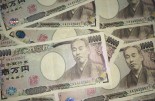Han Dieperink: The Japanese stealth bull market

This column was originally written in Dutch. This is an English translation.
By Han Dieperink, written in a personal capacity
Last year, the Japanese stock market achieved the highest return in the past ten years. The Nikkei ended with a plus of 28% at 33,464. The previous record was from 10 years ago, a plus of 57% in 2013, just after the start of Abenomics.
Over the past decade, Japanese companies have grown much faster than American companies. Only due to a sharply rising American valuation (P/E expansion) and currency differences did the American stock market ultimately perform better than the Japanese one. Despite this good performance, Japan is still underweight in broadly diversified equity portfolios. Japan is therefore a typical value investment: underloved, underresearched, underowned.
The Three Arrows of Abenomics
The good performance of the Japanese stock market is a direct result of Abenomics. Former Prime Minister Shinzo Abe's three-arrow policy is a combination of fiscal policy, monetary policy and structural reforms. These structural reforms also included an improvement in corporate governance, and the latter in particular is now starting to bear fruit on the stock market.
It has now been two years since Shinzo Abe was assassinated, but Prime Minister Fumio Kishida continues his policy, albeit with some adjustments. For example, Haruhiko Kuroda was clearly a different kind of central banker than his successor Kazuo Ueda, who was appointed by Kishida. Yet Kishida closely follows his predecessor Abe in taking measures to improve corporate governance.
Naming and shaming
In the field of corporate governance, Kishida, like Abe, uses the strong effect of 'naming and shaming' in Japanese culture. In the Western world we have a 'sin culture', in Japan it is an 'honor culture'. Damage to honor and the associated loss of face weigh heavily. It can affect the entire group or family, whereas a sin only affects the person in question and can often be forgiven relatively easily.
Under Abe, companies could only be part of certain indices if the return on equity was high enough. Companies that did not achieve this had some explaining to do in public and lost face. Kishida took the next step last year by including companies that are listed below book value and generate less than 8% return on equity.
The companies on that list are required to draw up and explain an improvement plan. The objective is higher profitability coupled with a higher valuation. As many as 65% of these undervalued companies responded immediately by buying back more shares and paying out more dividends.
Zaibatsus and Keiretsu
Japan was a closed market for activist investors and private equity for years, but that has also changed thanks to Abenomics. The Japanese economy is organized differently from those of the United States and Europe. This is thanks to General Douglas McArthur (the same general who proposed solving the Korean problem with a 'limited nuclear strike').
McArthur used the system of the Zaibatsu. The four major Zaibatsus before World War II were Mitsubishi, Sumitomo, Yasuda and Mitsui. McArthur's goal was to break the power of monopolies, but the result was that conglomerates emerged that competed with each other in different areas, which reduced the return on invested capital.
The result is that there are many competing manufacturers in Japan, for example in the field of cars, but also in the field of printers, for example. Only through mutual connections (Keiretsu) was competition limited, but at the same time corporate governance was also undermined. New government rules should now ensure that there is more consolidation.
Labor market flexibility
Part of Abenomics is labor market reform. Japanese people always had a job for life and pay was based on seniority. When a company's costs rose, but this could not be translated into higher prices for the end customer, the employees were often the ones who lost out. They had to accept lower wages to keep the company profitable. Something that has strongly contributed to the deflation spiral.
Now the principle is much more pay-for-work. Pensions have also been decoupled, making it easier to change jobs. The importance of making the labor market more flexible is great. Unemployment is low, but relatively few women work. Furthermore, Japan quite categorically refuses to admit labor immigrants. They would rather use more robots for this. In that respect, Japan benefits above average from artificial intelligence, also because according to the Shinto religion, every object (including every robot) has a soul. This ensures rapid acceptance.
Japan as a rentier nation
Kishida is also trying to make Japan a better rentier nation, somewhat similar to the United States in the 1970s. That was the period when more and more Americans began investing, made possible by the Employee Retirement Income Security Act and the introduction of 401Ks.
Right now, there is still about $15 trillion in cash on the sidelines. According to Goldman Sachs, the new rules could cause Japanese people to invest between 5 and 9 trillion yen extra in the Japanese stock market over the next five years. The shareholder culture has contributed greatly to the higher valuation of US shares. In that respect, there are more opportunities in Asia.
Cheap yen
Foreign investors are still benefiting from the cheap yen for the time being. Especially for Dutch holidaymakers, everything in Japan is cheap, including real estate and the stock market. The question is of course when the yen will gain strength. It is possible that the combination of a tightening Japanese monetary policy and an easing American monetary policy could set the yen in motion.
Once the move towards a stronger yen has started, it can happen quickly. At the moment the discount compared to fair value is about 40%, while the dollar is expensive. The yen has not been this cheap since the 1970s. This helps Japanese companies to compete well with China and, for example, with Germany.
First and Second Section
The Japanese stock market (TOPIX) consists of two parts. The First Section mainly contains the large caps, while the Second Section contains the small caps. Nowadays, the value is mainly in the small caps (which no one looks at), also because it is not always easy to find successors in aging Japan.
Japanese companies still have no net debt, a direct result of the two lost decades of deflation. These balances therefore still need to be optimized. In the short term, small caps with book values below 0.7 in particular benefit from the new rules, but Japanese banks are also keen to see the curve steepen. Furthermore, Japanese shares are increasingly used as a proxy for investing in China. Which is not surprising, since China is now the most important export market for Japanese companies.
Japanese stealth bull market
Japan is the only country in the world that benefits from rising inflation. For years, the central bank has tried to increase inflation. Now that this has finally been achieved, people seem to want to cherish this situation. With inflation also come higher wages and that will stimulate demand. Earlier this year, Uniqlo increased wages by 40%. Many other companies are also offering significant increases. This finally creates a positive spiral, with important consequences for the Japanese economy.
A stronger yen can also allay the fears of foreign investors who have so far seen price gains erode due to the weaker yen. Japan can benefit above average from artificial intelligence. Not because the Japanese are so creative, but mainly because the Japanese are so good at perfecting existing technology. They usually do not discover the latest technology, but they are very capable of improving 'what's in the box'. Japan also benefits from above-average growth in Asia. Seen from this perspective, the future will be more about growth than value in Japan.




